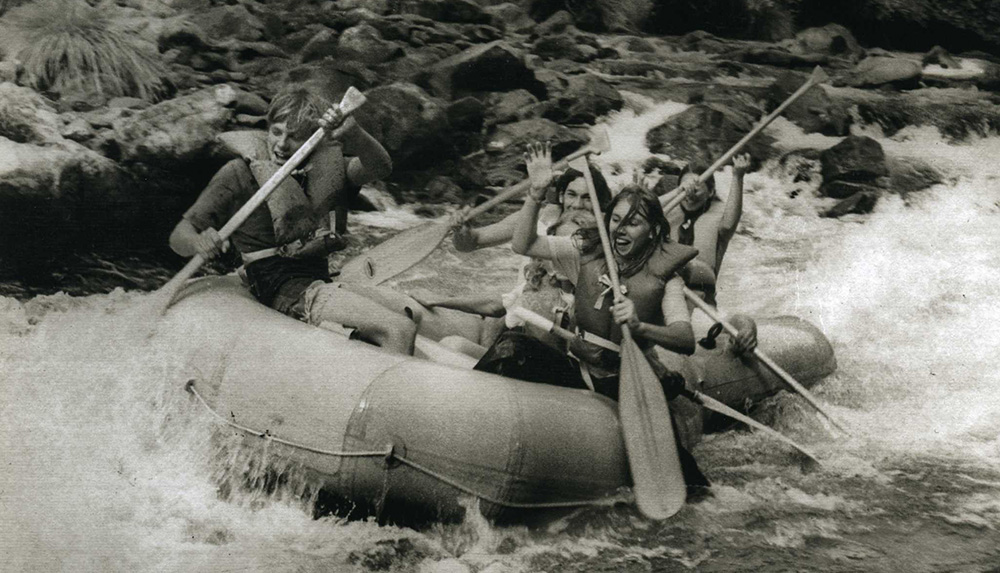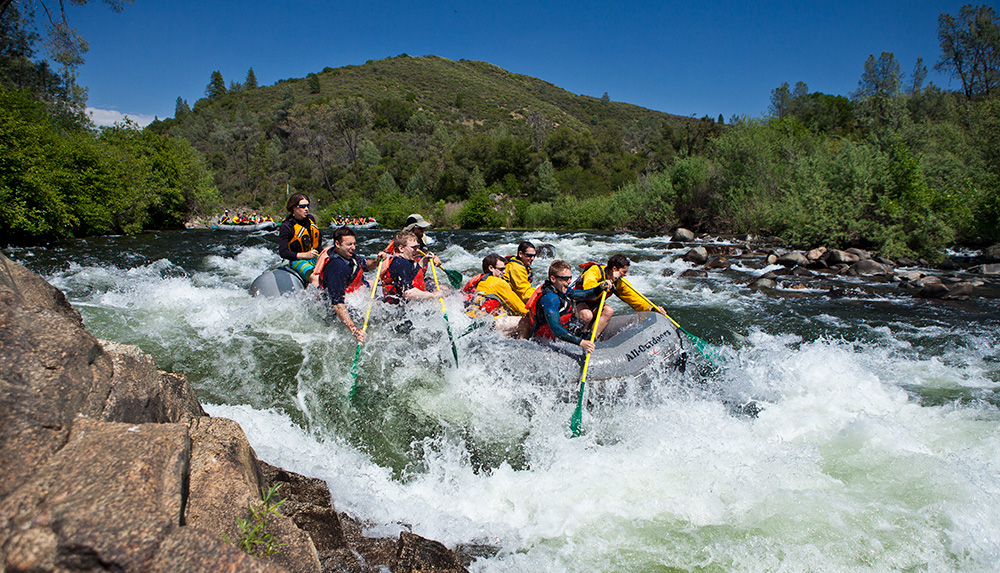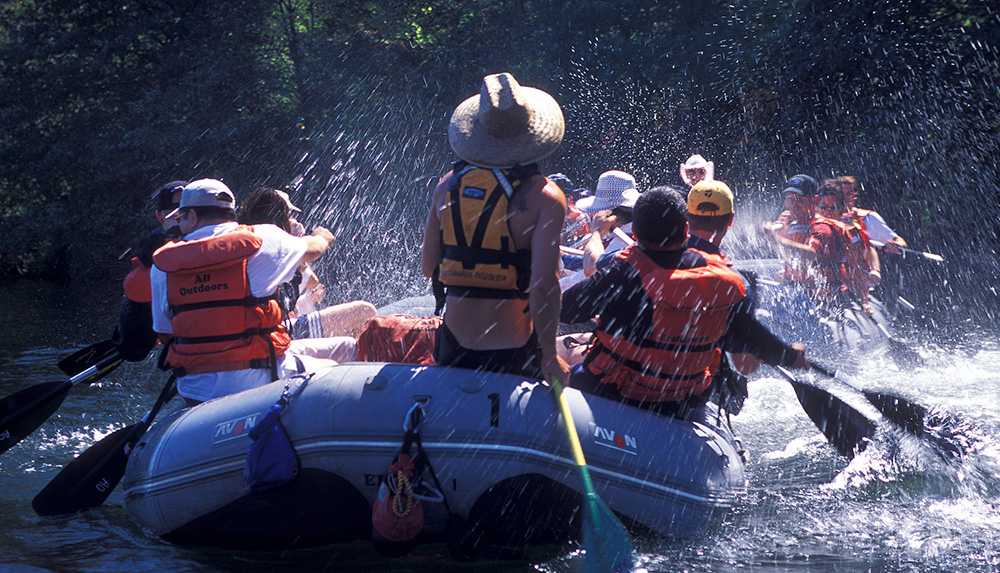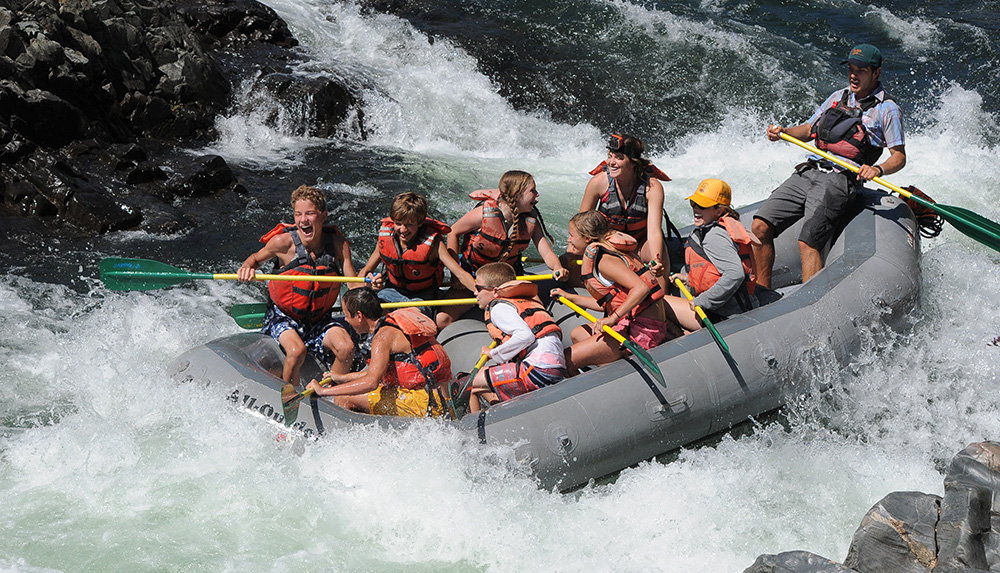How Did the South Fork American River Become So Popular?
Posted October 10, 2023 by Gregg Armstrong, Co-Founder
To understand the importance of the South Fork of the American River and how it became so well-known and so popular, we need to go back to the beginning stages of rafting.
Whitewater rafting is a relatively new recreational sport when compared to other outdoor activities like skiing, fishing, backpacking, and rock climbing. One of the first whitewater outfitters in the country (Bryce Whitmore) started operations on the Main Stanislaus River in the Sierra foothills in 1961. This amazing river quickly became the hub of rafting in California and the US. For the next 25 years, the “Stan” was the place to go if you dared to step into a rubber raft and venture through rapids lying deep within the only major limestone canyon in the country.
While the Stanislaus was the main show, there was another river lurking in the shadows waiting to step onto the stage. Its canyon and scenery were not as dramatic as the Stanislaus, but it had easier access, more miles of raftable river, and more rapids. Its name? The South Fork American River – the place that would become infamous in the whitewater world. This relatively underutilized and under-appreciated river was poised to dance on stage to an eager audience waiting to ooh and aah at its ability to please and entertain.

Rising from the Shadows
In the mid 60’s, the founder of All-Outdoors, George Armstrong, signed up for a small kayak class put on by the Sierra Club. The instruction was conducted on the easy, 3-mile Class 2 section of the South Fork American River that flows through Coloma Valley, where our Tom Sawyer Float Trips now take place.
George always had an itch to explore new places, so several years later, on a warm summer day in 1972, he set out to do just that. He grabbed his four boys (10, 15, 16, and 21 years old at that time), threw two rafts in the back of his old pickup truck, and drove up to the South Fork. He wanted to check out the other 18 miles of the river he never saw during his kayak class.
Our dad dropped off my older brother Mark and me at the start of the 9-mile Upper “Chili Bar” Section with one of the rafts and told us to head downstream until we got to a valley where we were to wait for him to pick us up. In the meantime, he and my two younger brothers, Scott and Randy, took the other raft and headed down to explore the 12-mile Lower “Gorge” Section below the valley.
To this day, we are still not sure whether our mom knew that he was taking us on such daring and foolhardy trips like these! We survived the two trips that day and consider the venture one of the best discoveries we made in those early years.

We started conducting commercial trips on this newly discovered whitewater river a few years later. Even though our primary operations stayed on the Main Stanislaus, all of us, including our guides and guests, were starting to fall in love with this “little sister” river. We did not know it at that time, but our growing operation on the South Fork was preparing us for a significant and surprising loss in 1982 when the Stanislaus River was flooded by New Melones Reservoir. The Main Stanislaus was one of the greatest rivers in the country, and the hub of rafting, but it was about to be lost forever.
South Fork Satisfies the New Interest in Rafting
The interest in whitewater rafting increased even more after the loss of the Stanislaus due to the publicity created by the New Melones Dam controversy. People wanted to try this relatively new sport and the South Fork American was the most likely choice. Within a few years, it became the new hub for whitewater rafting in California. While the curtain dropped on one river, it rose for another.
More and more rivers were being explored during the 80’s and 90’s to meet the increasing demand from the public, but nothing could compare to the South Fork as the perfect place to get your feet wet in the sport of whitewater rafting.
The South Fork Matures
The popularity of rafting continued to soar. It was the fastest growing water sport in the world and more people were getting their introduction to it on the South Fork than any other place in the western United States. The river’s new attraction as a valuable whitewater recreational resource had a significant positive impact on the surrounding area. It also caused water releases from upstream Chili Bar Reservoir to become scheduled and guaranteed. This meant people could enjoy rafting and kayaking on the river without worrying about surprise low flows.
The reputation of the South Fork as one of the best rafting rivers in the West has only become stronger and more well-known over the years. Much of this can be attributed to its natural qualities that make it so approachable and enjoyable. These include easy car access to starting and ending points on the river, 21 miles of continuous river with two sections of whitewater and a slower valley in between, wonderful and varied scenery, clean and reliable river water year-round, dozens of fun Class 2 and 3 rapids, and multiple trip options to choose from. It is a crowd-pleaser and a river nearly everyone can enjoy!

Rafting in California was born on the Main Stanislaus River, but it is safe to say that rafting grew up and matured on the South Fork American. The hub of rafting in the Western US today is California. The hub of rafting in California today is the beloved South Fork of the American River.

